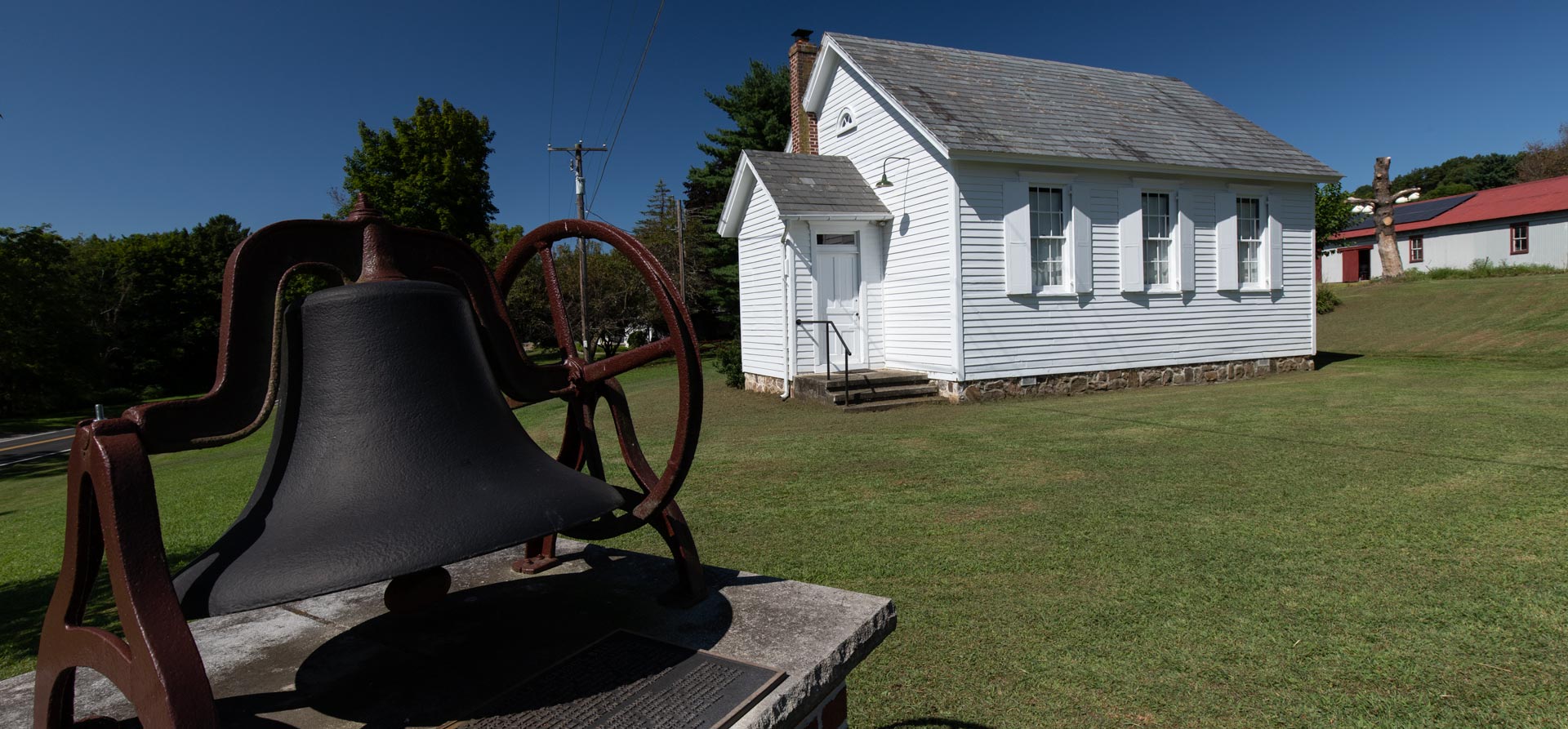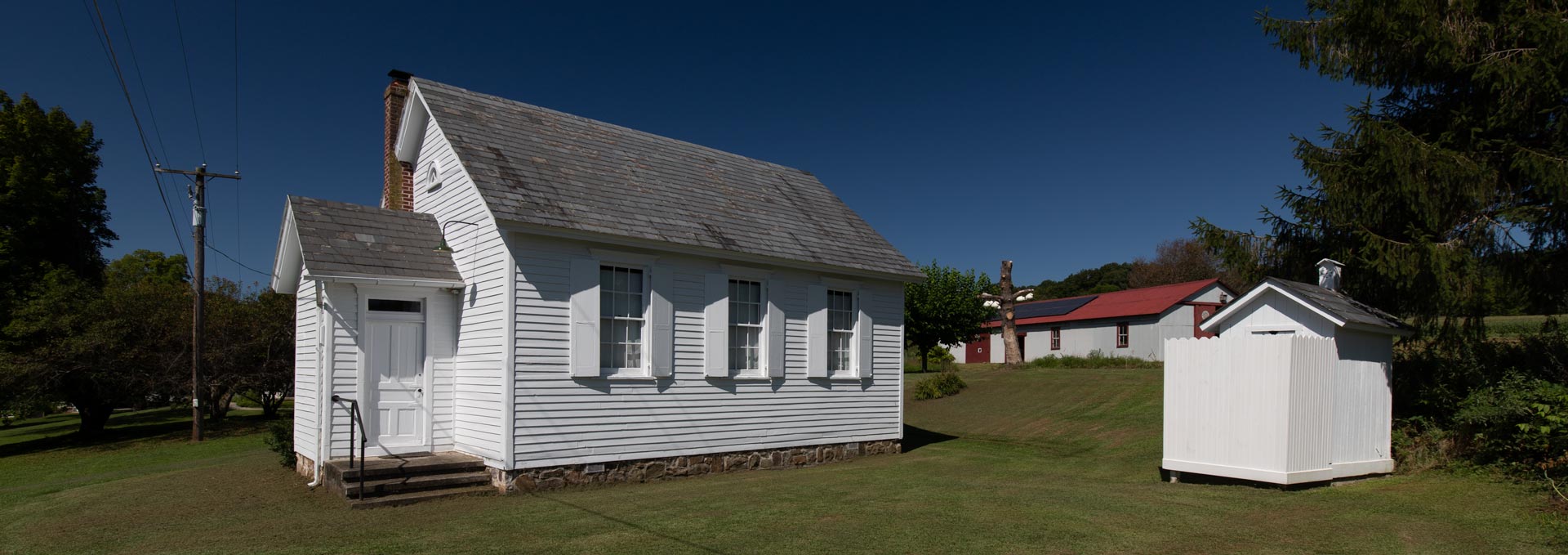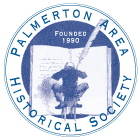The One-Room Kibler School

Kibler School, one of nine one-room schools located in Towamensing Township, was built in 1898. For almost 60 years it served to provide an education to children in rural Carbon County. It was decommissioned in 1955 and was replaced by a consolidated, multi-classroom elementary school.
Like many other similar structures, the passing years took its toll on the building until the Palmerton Area Historical Society acquired it in 1996 and moved it to its present location on Pohopoco Drive. This was made possible through the generosity of Elwood Christman who provided a 99-year lease on his property for one dollar a year!
Visit the school
Call Roy at (610) 377-0235 or Kay at (570) 386-4842 to arrange a visit.
The Kibler One-Room School Museum is located at 6495 Pohopoco Drive, Lehighton, PA 18235, approximately seven miles east of the Mahoning Interchange of the Pennsylvania Turnpike and across the road from Christman trailhead of Beltzville State Park.
The work of restoring and maintaining the building (and its charming out-building) has been a labor of love. “100 Friends of Kibler School” donate $15 (or more) each year for repairs, insurance, landscaping, and other expenses.
Apart from the satisfaction of having rescued the building from deterioration, the restored facility fulfills an educational role. It is open to the public free of charge every Sunday from 1pm to 3pm from Memorial Day through Labor Day at which times docents explain the artifacts and the guests to experience the oneroom “school day.”
Friends also sponsor “Three Thursdays in July” educational programs ranging from homing pigeons to antique cars to the history of the Lehigh Canal and every summer the Friends sponsor a major event such as an old-fashioned cakewalk or an ice cream social complete with homemade delights. A recent event was “Community Day” during which ten local organizations set up information table and explained their activities to visitors.
If you wish more information of The Kibler School or if you would like to be one of its “100 Friends” please feel free to stop at the Heritage Center in Palmerton or call 610-824-6954 for more information.
Click images below to view full-size.
History of the Kibler School
In 1898, most one-room school teachers were high school graduates who had also attended a two-year “normal school.” Teachers were expected to teach all eight grades and all subjects, including art and music.
Teachers occasionally supervised activities at recess and during the lunch hour, but pupils were usually allowed to play unattended.
Teachers generally lived near the school and often walked to class the same as their students. Male teachers usually had other occupations such as farmer, painter, or carpenter. In the early years of Kibler history, female teachers were not allowed to teach after they married.
Teachers knew the parents of the students; discipline was seldom a problem. When eight grades shared a room, it was important for the boys and girls who were not reciting their lessons to remain quiet, so children were assigned a large amount of desk work. On the other hand, homework was generally light, since most of the children were expected to complete their chores on the farm.
Corporal punishment was permitted and accepted. Kibler has two wooden paddles on display. A teacher was not only disciplinarian, but school nurse and counselor, as well.
View a 360-degree VR image of the interior of the Kibler School. Click and drag to pan around the room.
Inside Kibler School
Kibler School, built in 1898 at a cost of $460, was one of nine one-room schools located in Towamensing Township. At the time Kibler was built, the students-including six-year-old first graders-walked to school through rain and snow. As a practical matter schools had to be spaced every few miles.
As you enter the school note the large stove in the back corner. Either coal or wood could be be burned. A metal screen surrounded the stove to protect children from the hot surface. The screen also served as a convenient dryer for wet mittens and coats, which could be hung over the top.
Electricity was added to Kibler during World War II. Some of the original wiring is still being used today.
One-room schools in Towamensing contained small cabinet museums illustrating products made from commodities such as rice, coal, and flax. Kibler’s cabinet museum is located near the front of the room. The map on display is circa 1946. Kibler never had indoor plumbing. Water was carried in from the neighboring farmer’s well and was stored in a ceramic crock in the vestibule. Students usually drank from a common cup.
Outhouses were located behind the school: one for boys and one for girls. Each outhouse seated two. (A third outhouse located behind the girls’ toilet is in working order.)
The small unpainted building next to the outhouses was used to store coal. It was also utilized as a roadside fruit stand for a period after Kibler was decommissioned in 1955.
Student Life
The overwhelming majority of children who attended Kibler School were farm kids. Towamensing Township, where Kibler School was located, was predominantly agricultural, settled in the 1800s by Pennsylvania German immigrants. It was quite common, especially in the early years of the Kibler School history, for first graders to show up in September unable to speak English.
Pupils had a lunch period and a morning and afternoon recess. Some children brought potatoes to place in ashes beneath the coal stove; by lunch time a hot baked potato would be ready to eat. After World War II, decorated metal lunch boxes with small thermos bottles became popular. Various types of lunch boxes are on display on a shelf above the coat hooks at the back of the room.
From 1898 to 1948, all eight grades were taught in one room. Classes were naturally small, consisting of from one to four students. Around the time Kibler was constructed, the school year lasted only five or six months, allowing the pupils to help their families with farm work. In later years students attended from early September to late May.
The school day began with opening exercises, which included a passage read from the Bible, the Pledge of Allegiance, and the singing of two or three songs.
Academic subjects included reading, arithmetic, geography, history, grammar, spelling, and penmanship. As a special treat, a spelling bee or mathematics contest might be held on Friday.
Classes usually ran 15 to 20 minutes, and sometimes the teacher would combine classes. The class that was reciting usually sat at the front of the room. Pupils who listened to lessons of higher grades and learned the material were allowed to skip a grade. Older pupils were occasionally asked to act as tutors for younger pupils.
For many students, especially in Kibler’s early history, eight grades were considered sufficient. In 1898, graduates of the eight year course of study were well-equipped for a career in agriculture. Graduates from Kibler were able to attend the high school located in Lehighton, but they had to provide their own transportation or room with somebody in town. In 1948, Towamensing Township joined the Palmerton Area School District. Pupils were then bused to Palmerton high school when they reached 7th grade.

